Angela Ackerman's Blog: Writers Helping Writers, page 27
January 17, 2024
Phenomenal First Pages Contest

Hey, wonderful
writerly people!
It���s time for Phenomenal First Pages, our monthly critique contest. So, if you need a bit of help with your first page, today’s the day to enter for a chance to win professional feedback!
Entering is easy. All you need to do is leave your contact information on this entry form (or click the graphic below). If you are a winner, we’ll notify you and explain how to send us your first page.
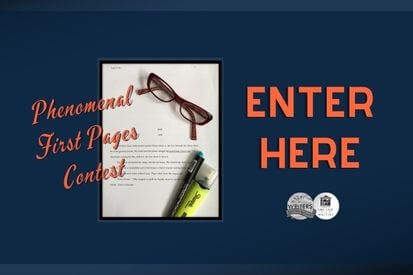 Contest DetailsThis is a 24-hour contest, so enter ASAP.Make sure your contact information on the
entry form
is correct. Three winners will be drawn. We will email you if you win and let you know how to submit your first page. Please have your first page ready in case your name is selected. Format it with 1-inch margins, double-spaced, and 12pt Times New Roman font. All genres are welcome except erotica.Sign Up for Notifications!
Contest DetailsThis is a 24-hour contest, so enter ASAP.Make sure your contact information on the
entry form
is correct. Three winners will be drawn. We will email you if you win and let you know how to submit your first page. Please have your first page ready in case your name is selected. Format it with 1-inch margins, double-spaced, and 12pt Times New Roman font. All genres are welcome except erotica.Sign Up for Notifications!If you���d like to be notified about our monthly Phenomenal First Pages contest, subscribe to blog notifications in this sidebar.
Good luck, everyone. We can’t wait to see who wins!
PS: To amp up your first page, grab our First Pages checklist from One Stop for Writers. For more help with story opening elements, visit this Mother Lode of First Page Resources.
The post Phenomenal First Pages Contest appeared first on WRITERS HELPING WRITERS��.
January 16, 2024
Turn Your Readers into Detectives

Imagine inviting us into your protagonist���s house or whatever you deem to be their most sacred physical space. But while we���re so excited to meet your protagonist, they���re not actually there. We can���t hear what they say or observe the way they move in order to get to know them. Or can we?
Now imagine that you���ve asked us to become a detective in their space. To piece together who your character is based upon what our senses tell us through clues. We���ve been asked to figure out who your character is without ever meeting them. Is this even possible?

In our own writing, we���re most effective when we set up ���crime scenes��� for our readers and invite them in to snoop around. The more we let the reader���s senses process the story world, the more they engage. The more they work. The more they get the satisfaction of knowing your character with greater precision and depth. In turn, this tricks them into feeling like they���re physically inside the story and into feeling they know your character on a deeper level.
Consider the two examples below. As you read them, feel out which one draws you in more as a reader:
Greg loves the beach.
Or���
Greg���s kitchen cupboard is overstuffed with brightly-colored margarita glasses. Some are hand-painted with palm trees and beach umbrellas and little flip-flops, while others have words printed along the rim. Places like Destin, Myrtle Beach, and Emerald Isle.
Chances are, you felt reeled in more by the second example. Why? Well, because the first one told you about Greg. It outright explained him as a character to you and asked you to take it at face value. There wasn���t any room for you to work. To deduce. To decide who Greg is on your own. The fact was served up cold, and this creates distance between you and the writing. Furthermore, you���re not left with any understanding of the size and scope of Greg���s love for the beach.
Whereas in the second example, you became a detective. Greg���s collection of glasses gives you a sense for just how much he craves that feeling of being on the beach with a margarita in his hand. It tells you not just that he has a lot of glasses, but leaves you room to deduce how much the beach appeals to him and how he probably yearns to be there now. So we don���t just walk away knowing this fact that he likes the beach, we know Greg on a deeper level because our senses have processed clues.
Now, it���s important to note that while offering these physical clues is much more inviting for your reader, there���s actually room to take things up a notch. We���ll break our own rule for a moment and let Greg slip into the scene so we can see what he does with that cupboard of glasses.
Greg���s hand wavers back and forth inside the cupboard packed with margarita glasses. He grins with a distant look in his eyes and carefully pulls one out. ���Emerald Isle��� is printed along the rim.
Notice how we���ve moved from the efficacy of that second example (Greg adores the beach, has clearly been to many of them, and doesn���t mind annoyingly cheery colors) into an even deeper level of Greg���s characterization. His movement now conveys his emotions both in this moment and as it seems to pertain to a memory. He handles the glass carefully���that tells us about his emotions toward the glass itself, the beach, and the memory. We���re invited in even further to wonder why he���s chosen the Emerald Isle glass in this exact moment, which propels us forward with curiosity in the story.
The takeaway? Physical description of your character���s space + movement is the best way of all to reveal your character to the reader. Rather than pausing the story to describe the setting or who your character is, we employ our readers much more like detectives when we let them put physical detail and character movement together.
Still, for the sake of exploring and getting the most out of the setting, it helps to scoot your character out of their spaces so they can���t grab control and outright tell us who they are or how they feel.
Here are sensory-based prompts you can address to help us get to know who your character is before you invite them back into the scene to interact with those spaces:
Visual
What does the style of the furniture in your character���s home (or even just their bedroom if it���s a younger character) say about who they are as a person? Is it modern, farmhouse style, antique, beat-up, hand-me-down furniture?
How is the furniture arranged? Is it in a way that reflects their tendencies toward being open, closed-off, organized, or chaotic? Intentional or haphazard?
What sorts of objects tell us about the way they spend their time? Are there tools or equipment that reflect their hobbies? Memories they hold dear? Whose pictures are posted, if any? Keepsakes from events they���ve attended or greeting cards from specific loved ones?
Are there patterns on things like bedding or clothing that reveal a deeper tendency toward something?
What colors dominate their decorations or functional items (cups, towels, bedding, etc.)? How do those colors reflect their propensity toward certain moods?
What���s hiding in the back of their closet? Their drawers? What���s shoved far beneath their bed?
How is the lighting? What does this show about their comforts or their fears?
TouchWhat sorts of linens have they chosen for bedding? Window dressings? Pillows or throw blankets? Rugs? What might those textures let us glean about their personality? Are linens smooth and crisp, or wrinkly?
What sorts of fabrics dominate their cache of clothing? What do we feel when we open dresser drawers or run our hands through your character���s closet? How do the textures of each of these reflect their need for or rejection of comfort?
If we run our fingers along surfaces, which ones have gathered dust and how does that reflect avoidance or neglect for certain aspects of their life? Which ones are spotless to reveal care and a desire to maintain?
AuditoryWhat sorts of music or sounds drift through their spaces? How does that music or certain sounds reflect their personality or the way they have sentimental attachment to something? Do the auditory clues change depending on which space we���re in?
Are their windows open or closed to the outside world?
Are there objects that suggest auditory preferences (ear plugs, headphones, earbuds, instruments, white-noise machines, etc.)?
What does the range of their music collection tell us about their range of moods?
What size or how many speakers are around their home? What does that suggest about their reliance upon music and sound in processing emotions?
Scent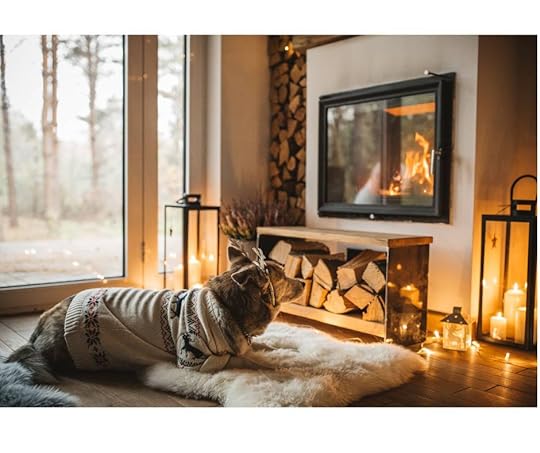
What are the scents in the different spaces where they spend time? How might those tell us something more about their interests or what they value?
Are they utilizing diffusers, candles, or plug-in scent items to evoke mood? To cover up something?
How does scent reflect the amount of time your character spends in their sacred space(s)?
Are the scents suggestive of memories or favorite times of year? Favorite places (e.g. tropical candles might suggest a preference for summer and beach getaways)?
TasteIf we open the kitchen cupboards, refrigerator, or the medicine cabinet, are there items that reveal your character���s lifestyle choices to us? Their cultural background? Their financial means?
How do the foods we see suggest a tendency toward snacking versus eating full meals? Having time to cook or relying on conveniences?
What sorts of food wrappers or food waste are sitting in the trash can?
How does the volume of food on hand suggest their outlook on life?
Are items in the fridge expired? Organized?
Again, as shown in that third example above, all of these clue-based details are best mixed with action. Nothing drops the tension faster than the narrator pausing to tell us what a character is wearing or what the character���s bedroom looks like. The most effective descriptions are woven together with movement. The more you concoct the facets of your character���s spaces with intention, the more your reader steps in like a detective, working through your clues and getting to know your character on the deepest levels.
*Marissa also shows you how to approach your novel like a winning trial lawyer,
delivering your reader to the verdict you want.
The post Turn Your Readers into Detectives appeared first on WRITERS HELPING WRITERS��.
January 13, 2024
Character Type & Trope Thesaurus: Dark Lord or Lady
In 1959, Carl Jung first popularized the idea of archetypes���”universal images that have existed since the remotest times.” He posited that every person is a blend of these 12 basic personalities. Ever since then, authors have been applying this idea to fictional characters, combining the different archetypes to come up with interesting new versions. The result is a sizable pool of character tropes that we see from one story to another.
Archetypes and tropes are popular storytelling elements because of their familiarity. Upon seeing them, readers know immediately who they’re dealing with and what role the nerd, dark lord, femme fatale, or monster hunter will play. As authors, we need to recognize the commonalities for each trope so we can write them in a recognizable way and create a rudimentary sketch for any character we want to create.
But when it comes to characters, no one wants just a sketch; we want a vibrant and striking cast full of color, depth, and contrast. Diving deeper into character creation is especially important when starting with tropes because the blessing of their familiarity is also a curse; without differentiation, the characters begin to look the same from story to story.
But no more. The Character Type and Trope Thesaurus allows you to outline the foundational elements of each trope while also exploring how to individualize them. In this way, you’ll be able to use historically tried-and-true character types to create a cast for your story that is anything but traditional.
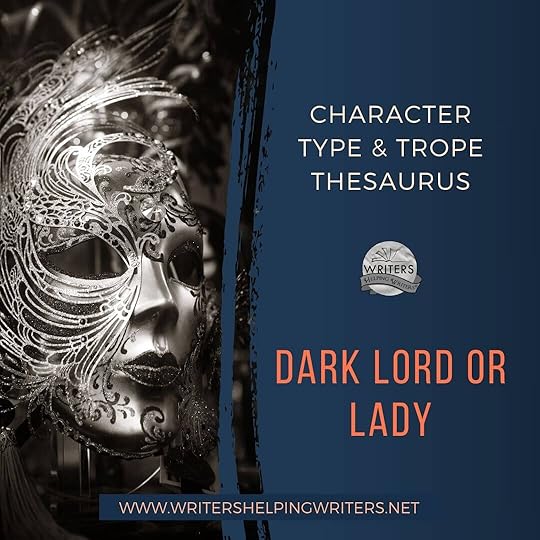
DESCRIPTION: Evil personified and seemingly invincible, this antagonist is out to rule the world. They often use fear, intimidation, and the extensive resources (magical, military, or otherwise) at their command to dominate and control others.
FICTIONAL EXAMPLES: Sauron (The Lord of the Rings trilogy), the White Witch (The Lion, the Witch, and the Wardrobe), Voldemort (the Harry Potter series), Thanos (the Marvel Universe), Emperor Palpatine (the Star Wars franchise)
COMMON STRENGTHS: Adaptable, Alert, Ambitious, Analytical, Bold, Confident, Decisive, Efficient, Focused, Independent, Industrious, Intelligent, Meticulous, Pensive, Perceptive, Persistent, Persuasive, Proactive, Resourceful, Talented
COMMON WEAKNESSES: Callous, Cocky, Controlling, Cruel, Devious, Disloyal, Evil, Greedy, Haughty, Impatient, Inflexible, Judgmental, Manipulative, Obsessive, Perfectionist, Possessive, Pretentious, Resentful, Suspicious, Temperamental, Unethical, Vindictive, Violent, Volatile
ASSOCIATED ACTIONS, BEHAVIORS, AND TENDENCIES
Having a strategic mindset
Being single-minded in their pursuit of the ultimate goal
Carefully controlling their emotions
Having a big presence that fills the room
Wearing clothing meant to make them more intimidating
Walking confidently with long strides
Taking quick, decisive actions
Being emotionally unavailable
Having little tolerance for mistakes; being unforgiving
Easily replacing allies or underlings who fall short of the character’s expectations
SITUATIONS THAT WILL CHALLENGE THEM
Loving a child, parent, sibling, or spouse who disagrees with the character
A seemingly insignificant challenger defeating or eluding the character
No-win scenarios
Their methods or goals being challenged by a trusted lieutenant
TWIST THIS TROPE WITH A CHARACTER WHO���
Offers a measure of grace when people make mistakes
Cares and offers protection for someone vulnerable
Has an atypical trait: merciful, vulnerable, honest, socially aware, sophisticated, humble, etc.
CLICH��S TO BE AWARE OF
Dark rulers with a physical deformity that represents their corruption and evil
A dark lord who kills off loyal followers for minor infractions
Megalomaniacs who refuse to listen to anyone’s counsel
Other Type and Trope Thesaurus entries can be found here.
 Need More Descriptive Help?
Need More Descriptive Help?While this thesaurus is still being developed, the rest of our descriptive collection (16 unique thesauri and growing) is accessible through the One Stop for Writers THESAURUS database.
If you like, swing by and check out the video walkthrough for this site, and then give our Free Trial a spin.
The post Character Type & Trope Thesaurus: Dark Lord or Lady appeared first on WRITERS HELPING WRITERS��.
January 11, 2024
How to Generate Powerful Story Conflict

Conflict is a powerful tool for storytellers, allowing us to place roadblocks, challenges, adversaries and more in a character���s way so the road to their goal is much more difficult. Deployed well, conflict creates tension and intensity for reader, capturing their attention for the length of the book.
So what does deployed well mean?
For conflict to have a strong foundation, we need to focus on three things. First, readers need to feel connected to a character for them to care when something bad happens to them. For example, if a car hits a dog-kicking, old-lady-scamming protagonist and breaks both his legs, will your audience be upset? Not at all���in fact they may actually cheer. But if the protagonist is a single mother of three who scraped and saved to go to night school and create a better life for her family, seeing such a terrible event happen to them will really rip your readers up. So, building flesh-and-blood characters readers will connect to is crucial for scoring a strong conflict hit.
The second thing conflict must do is present a character with a problem that���s not easy to resolve. A danger or threat that can be avoided if the character simply does one thing will feel like a cop-out to readers (unless you���re purposefully luring the character into a trap so it leads to spectacular, unexpected fallout).
The third component of well-written conflict is that it will be original in some way, giving readers something they���ve not seen before. And this is where some writers trip, especially if they���re working with a conflict scenario found in many stories, or it���s common within a genre. Romance readers will have experienced plenty of stories where a romantic competitor enters the scene, Fantasy readers know that at some point, an adventurer will get injured, and anyone who reads superhero stories has seen more than a few characters discovering they have unwanted powers.
The thing is, readers expect to see these conflicts, so we need to include them. But we shouldn���t copy what others have done. Instead, we should find a way to make the situations fresh���and hopefully more difficult. Here are some ideas:
Make the Outcome Uncertain
To keep readers from easily predicting the result of a conflict scenario, sow some doubt���a.k.a., don���t go easy on your protagonist. Put them at a disadvantage���or, if you���re feeling evil, give them an easy win that isn���t a true victory. Maybe a character with friends in high places gets a big promotion, only she doesn���t realize her ���friends��� are setting her up as a scapegoat for their criminal behavior. Winning can also trigger unforeseen consequences. If your character doesn���t pay now, make her pay later.
Withhold Something the Character NeedsWhen a character has everything���information, financial backing, a mentor, the support of others���it���s an easier skate to the finish line, and what���s the fun in that? Think about what your character needs most to succeed, and take it from her. If she needs medicine, put it in a glass vial that, at a critical point, will shatter. When she needs a map to navigate, let it be ruined by a dunk in the river. Knowledge, a way to communicate, a weapon���characters who are forced to act when they don���t have what they need often screw up, leading to more conflict.
Make the Stakes PersonalEvery story should have high stakes, where something is at risk if the character fails. But when the stakes are personal, winning becomes more crucial because of what they could lose. Get to know your character and the people, places, and things they hold dear. Then endanger them: a child���s life, the character���s job, their reputation, or their marriage. Most characters will walk through fire to protect the people and things they cherish.
Consider a No-Win Situation
The most heart-wrenching times for your character are when they have to make a decision in which someone will pay regardless of their choice. These story moments take courage because the character must decide between two equally bad outcomes. Do they save their daughter if doing so means abandoning their son? Do they stay and risk capture, or run and risk death by exposure? No-win scenarios create obvious tension for characters but also for readers, who recognize an impossible situation when they see it and wonder what choice will be made.
Keep Your Character MovingDid you know that if sharks stop swimming, they���ll die? This is a lesson we can apply to storytelling because when a character settles down for too long, the tension flatlines. So, keep them moving. If they find a haven, fill it with hidden dangers that compel them to leave. If a romantic relationship is becoming routine, introduce a disruptor���a secret being exposed, a hopeful ex-lover showing up, or a complication that forces a physical separation.
This goes for inner movement, too. If the character isn���t moving forward and resolving their internal conflict, create a crisis that jeopardizes everything they���ve worked for. Remind them that they need to keep evolving to get what they want, even if this means facing hard truths or examining old wounds.
Shake Up the TeamIf your character is relying on others, find a way to introduce dysfunction and friction. Disagreements, misunderstandings, egos, rivalries, or a sense of entitlement can shake the foundation of a relationship, create a power struggle, and leave your character without their much-needed backup.
Tighten the TimelineThere���s nothing like a ticking clock to pile on the pressure, so think about how you can shorten a window of opportunity, move up a deadline, force the character to wait, or give them an ultimatum. Characters who rush can get sloppy and make mistakes, compounding the conflict.
Pull the TriggerAll characters carry some baggage from the past. If they���re navigating a change arc, they���ll have an unresolved wound, and chances are, they���ve buried it deep. The problem is, for them to move forward, they need to deal with whatever is holding them back. A well-placed trigger can cause that wound to resurface.

Maybe your character Tamara has been avoiding her cousin who captained the boat the day her sister drowned. But now she must work side by side with him to save their family���s business. Or your character must perform a wellness check on someone who lives in the building where her abusive parents raised her. Exposing your character to fears and painful memories can awaken them to the realization that the past is holding them prisoner.
Include a SacrificeA character facing a challenge that���s beyond her must make some hard choices if she wants to avoid losing everything. Maybe she must abandon one goal to put more energy into another, or give up on a passion to stand by a friend. Sacrifices are meaningful and will cause readers to care, so don���t be afraid to use them.
Turn to Your GenreEvery genre will have specific opportunities to ramp up conflict. Does your character live in a historical time when certain illnesses were prevalent, or their rights were restricted because of their race, gender, or religion? Is there a specific technology that is hampering your character���s ability to move undetected in a future world? Pull organic conflict from the very bedrock of your genre by considering the character���s reality and the challenges they might face.
Don���t Make Violence Your Go-ToAs you seek ways to power up conflict, it can be tempting to use violence to hammer home a threat. Sometimes this is warranted and fits the scenario, but other times it���s used as an easy way out. Before going to this extreme, pause to see what���s best for the story. If you decide to use it, don���t make it the only tool in your bag of tricks. Writers should also think twice about using gratuitous violence to characterize, especially in situations that directly target women or children.

Need more ideas for story conflict? Check out the 225 scenarios covered in the GOLD and SILVER editions of The Conflict Thesaurus: A Writer���s Guide to Obstacles, Adversaries, and Inner Conflict.
The post How to Generate Powerful Story Conflict appeared first on WRITERS HELPING WRITERS��.
January 9, 2024
Failure in Fiction
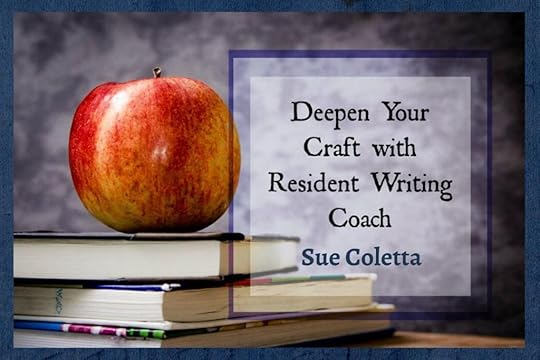
Writers need to have a sadistic streak to inflict pain���emotional or physical���on our beloved characters repeatedly, but failure is important in fiction. Without it, the story drags.
Why to Include FailureWithout failure, we decrease the stakes, consequences, and slow the pace. And, most importantly, without failure there is no character arc. The story may seem messy and uncomfortable when we add failure, but it also adds authenticity. Mistakes and failure are part of life. If we don���t shy away from failure, the characters��� journey feels real.
Think about it this way. Who would you rather champion���a character who worked hard, persevered, failed a gazillion times, and still achieved massive success or someone who inherited a business?
How to Include FailureIt���s not difficult to make a character fail. The possibilities are endless. Failure might result from the character���s flaws, fears, insecurities, inabilities, or simple mistakes and oversights that have major consequences later in the story.

Here a few examples:
Trusting the wrong personRefusal to accept help or adviceMisheard informationTripping, slipping, fallingUnable to follow simple directionsLosing something that���s important to the storylineRushing without forethoughtMisunderstanding a friend/parent/mentorMisunderstanding directions, plot clues, etc.Misreading a situationOverhearing something incorrectlyMisplaced suspicion of an innocent person and/or act of kindnessPhysically failingArriving too lateArriving too earlyDropping an important object that shattersLosing something importantSpeaking without thinking things through firstUnwilling to stay quietSneeze or cough at the wrong timeNot speaking up when they shouldForgetfulnessNot trusting or second-guessing their own capabilitiesNot being willing to take a needed riskWhere to Include Failure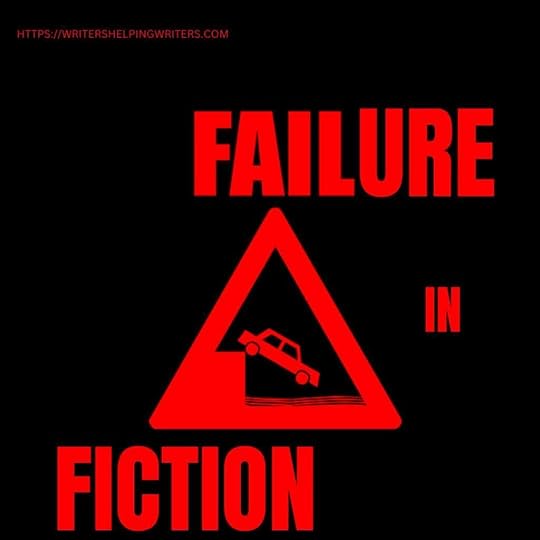
We don���t need major complex issues to fail. Speedbumps in every scene help with pacing. Our character doesn���t need to be a complete klutz, but they should make mistakes. Otherwise, the character won���t feel real.
We enjoy watching others fail. It���s human nature. How many of you have gotten frustrated with a cyclist who���s holding up traffic? Have you ever wished the car in front of him would open their door? Or the tires would blow, sending the cyclist over the handlebars?
Admit it. We���ve all experienced similar thoughts. Do we want the cyclist harmed? No. We just want him out of our way. And let���s face it, if he crashes it���d be a lot more interesting. Dark thoughts entering our headspace doesn���t mean we���re bad people. It means we���re human.
Failure creates conflict.Conflict creates tension and raises the stakes.Tension is far more interesting than continual success, which gets boring fast.To answer the ���Where?��� question, include failure when things are going a little too well. Now, it doesn���t need to be a major failure. The character arc shouldn���t change.
Four quartiles or Parts (each represent 25% of the book) of a character arc should look like this:
Part I���The Setup: Introduce main character, hook the reader, and setup First Plot Point. In terms of character, they���re like a newborn experiencing the world for the first time. With an uncertain future ahead of them, they should fail. A lot. Part II���The Response: Main character reacts to their new reality, the goals, stakes, and obstacles revealed by the First Plot Point. They���re trying new things and failing a great deal. Part III���The Attack: Midpoint information or awareness causes the MC to change course in how to approach obstacles. The MC is now empowered with intel on how to proceed, rather than staying reactive. We still need failure, but they���re smaller mistakes.Part IV���The Resolution: The MC summons the courage and growth to find a solution, overcome inner obstacles, and conquer the villain(s). Failure is minimal here, if at all.When to Include Failure
Let���s say your character is cruising along. They���ve met many of their scene-level goals and are making decent progress. Now would be the perfect time for failure. I���ll show you what I mean���
A scene is broken into two parts, Scene and Sequel.
Scene StructureGoal: What does the character want to achieve? What���s their objective?
Conflict: Obstacles preventing the character from reaching that goal. *Here���s a great place to add failure.
Disaster: Things worsen. *Or here.
Sequel StructureReaction: How does the character react to the Disaster? *Another perfect spot for failure.
Dilemma: A no-win situation. If they do A, B might happen. But if they refuse to act, the fallout will be worse.
Decision (which leads to the Goal of the next scene): The act of choosing what to do. *We can even add failure here (i.e. short-sightedness).
On a micro-level, include failure in motivation-reaction units or MRUs.
Motivation (external): Something elicits a response in our character.Reaction (internal): How the character responds to the outside stimuli.Also known as cause and effect, failure can only occur in the reaction. Why? Because the MC has no control over external stimuli. Could their past actions or mistakes be responsible for the motivation/cause they���re facing now? Absolutely. Hence why failure is so effective in fiction. As mentioned above, failure leads to conflict. And conflict drives the story.
What types of failure have you included in a WIP?The post Failure in Fiction appeared first on WRITERS HELPING WRITERS��.
January 6, 2024
Character Type & Trope Thesaurus: Funster
In 1959, Carl Jung first popularized the idea of archetypes���”universal images that have existed since the remotest times.” He posited that every person is a blend of these 12 basic personalities. Ever since then, authors have been applying this idea to fictional characters, combining the different archetypes to come up with interesting new versions. The result is a sizable pool of character tropes that we see from one story to another.
Archetypes and tropes are popular storytelling elements because of their familiarity. Upon seeing them, readers know immediately who they’re dealing with and what role the nerd, dark lord, femme fatale, or monster hunter will play. As authors, we need to recognize the commonalities for each trope so we can write them in a recognizable way and create a rudimentary sketch for any character we want to create.
But when it comes to characters, no one wants just a sketch; we want a vibrant and striking cast full of color, depth, and contrast. Diving deeper into character creation is especially important when starting with tropes because the blessing of their familiarity is also a curse; without differentiation, the characters begin to look the same from story to story.
But no more. The Character Type and Trope Thesaurus allows you to outline the foundational elements of each trope while also exploring how to individualize them. In this way, you’ll be able to use historically tried-and-true character types to create a cast for your story that is anything but traditional.
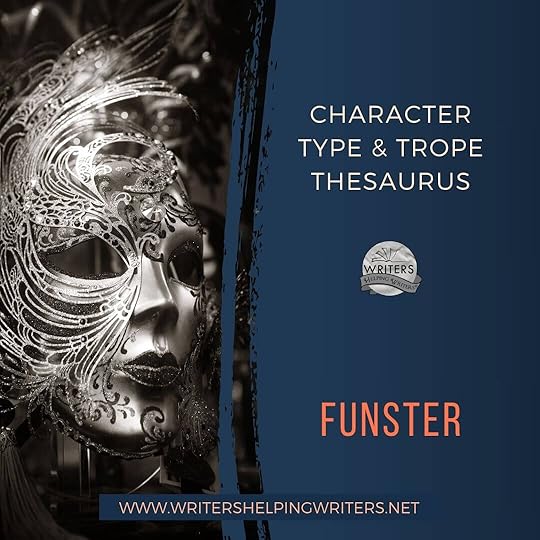
DESCRIPTION: This character lives to make people laugh by telling jokes, playing pranks, and clowning around.
FICTIONAL EXAMPLES: The Weasley twins (the Harry Potter series), Merry and Pippin (The Lord of the Rings), Matilda (Matilda), Viola (Twelfth Night), Jim Halpert (The Office)
COMMON STRENGTHS: Adventurous, Bold, Charming, Confident, Creative, Easygoing, Extroverted, Flamboyant, Flirtatious, Friendly, Funny, Independent, Perceptive, Playful, Quirky, Spontaneous, Spunky, Uninhibited, Whimsical, Witty
COMMON WEAKNESSES: Childish, Cocky, Devious, Dishonest, Disloyal, Disrespectful, Flaky, Frivolous, Impulsive, Inattentive, Irresponsible, Mischievous, Rebellious, Reckless, Rowdy, Self-Destructive, Self-Indulgent, Selfish
ASSOCIATED ACTIONS, BEHAVIORS, AND TENDENCIES
Attending many social events and parties
Knowing a lot of people
Being a good host
Having a good sense of humor
Taking risks
Being resilient emotionally
Knowing how to read a room
Being unpredictable
Being insensitive to people’s feelings
Not always knowing when to stop
Making impulsive decisions
SITUATIONS THAT WILL CHALLENGE THEM
Being around people who don’t appreciate their sense of humor
Unintentionally insulting someone important (or someone they care about)
Their prank backfiring and causing serious damage or trouble for others
TWIST THIS TROPE WITH A CHARACTER WHO���
Is the protagonist rather than the sidekick
Also has a serious goal
Has an atypical trait: philosophical, responsible, sentimental, studious, morbid, etc.
CLICH��S TO BE AWARE OF
The funster who has no depth and only exists as comic relief
A funster as a support character with no arc
Other Type and Trope Thesaurus entries can be found here.
 Need More Descriptive Help?
Need More Descriptive Help?While this thesaurus is still being developed, the rest of our descriptive collection (16 unique thesauri and growing) is accessible through the One Stop for Writers THESAURUS database.
If you like, swing by and check out the video walkthrough for this site, and then give our Free Trial a spin.
The post Character Type & Trope Thesaurus: Funster appeared first on WRITERS HELPING WRITERS��.
January 4, 2024
Ensure Your Newsletter Lives Up to Subscriber’s Expectations
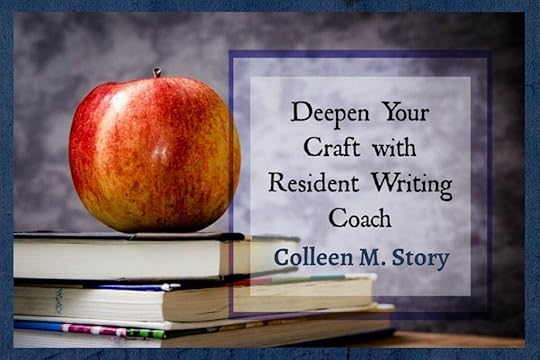
Your author newsletter freebie is a success! You���ve got lots of new subscribers eager to read your next email.
Now what?
You have two options: deliver just what your reader wants to ensure they stick around, or disappoint them so that they unsubscribe.
How can you increase your odds that your newsletter will do the former and not the latter?
These three tips should help.
1. Always Think About Your Reader.
One of the main reasons people unsubscribe from email newsletters is that they don���t find them interesting, entertaining, or useful.
Your newsletter will be none of these things if you neglect your reader���s wants and needs when you���re writing it.
Yes, authors maintain email newsletters to grow their readership, hoping to sell more books (and other products) down the road. But if someone signs up for your newsletter and all they get in return are emails encouraging them to buy your stuff, they���ll unsubscribe.
You���ll get a similar outcome if you spend most of your time talking about yourself and your next project without delivering anything of value for the reader.
���But my progress on my next book is of value to my reader!��� you may think.
Well, if you���re Margaret Atwood or Stephen King, perhaps. But most of us haven���t reached that level of fame, so we have to be a little more creative.
When drafting your email, think of your reader first. Imagine if you were that person. What would you hope to find when you double-click?
You���d probably want something that would enhance your life���practical tips you could use, an entertaining story that might make you laugh, or pertinent information you need and can���t find anywhere else.
Which (or which combination) of these you deliver depends on the expectations you created in your reader���s mind when they signed up. Which brings us to tip #2.
2. Exceed Your Reader���s Expectations
Think back to the freebie you offered your reader. When they gave you their email address in exchange for that freebie, they assumed that in your newsletter, you would continue to deliver similar material.
This is assuming you were creative in your free offer. (See our post here for more on that.) If you offered a short story or chapter in a book, you may assume that your reader would want more of your writing. That may work with readers who are already fans, but often it���s difficult to get new people to sign up���or to stick around���for stories alone if they���re not that familiar with your work.
You can grow and maintain a much larger list if you offer something of more immediate value. Romance writers may offer dating tips, for example. Mystery writers may talk about true crime stories. Sci-fi writers may enjoy making predictions about the future of technology.
Whatever you offer in your freebie, your reader will expect more of that, so be prepared. If you offered dating tips, understand that your reader came to you for those. They���ll be happy with your newsletter if at least part of it meets this expectation.
You can go beyond that, of course, as long as you keep your reader���s needs in mind. You might talk about how to navigate certain disagreements in relationships, magical places to go for your anniversary, or the best topics to discuss on a first date.
Along the way, watch your open and click rates. (Most email programs track them.) Make a note of which emails perform well and use that information to continue to deliver what your readers are most interested in. Maybe they love dating tips, for example, but don���t care as much about navigating disagreements.
Once you deliver that ���thing��� of value to your reader, then you can add a little about your next project, or drop in an ad for a book that is on sale. You���ve made your reader happy, so they will be more open to learning about the work you���re doing and what you have to offer.
3. Be Consistent!This is one of the harder parts of providing an email newsletter to your subscribers, because it requires commitment on your part.
Decide how often you���re going to send your newsletter and stick with it. Otherwise, you risk your reader forgetting all about you, so that when you finally send another newsletter, they���ll unsubscribe because they no longer remember signing up.
You can choose to send something once a month, twice a month, three times a month���whatever works, but once you���ve settled on a frequency and day of the week (sending on the same day each time is best), you need to stick with that.
There are many benefits to doing so. First, you cement your name and your work in your reader���s mind. Soon they will easily remember who you are and what you do.
Second, you create an expectation���your reader can expect an email from you twice a month on Wednesday mornings. If she likes what she finds, she���ll grow to look forward to those days. At the very least, she won���t penalize you for ���bothering her,��� because you���ve already set up the expectation of that regular delivery.
Third, and perhaps most importantly, you give yourself the opportunity to build a relationship with your reader. With every email you deliver that meets his expectations, you���re letting him know that:
a) you are the expert in the topic you���ve chosen to focus on, and
b) you���re the one to remember when he���s ready to buy his next book.
These relationships are the most rewarding part of having a newsletter. You���ll be able to turn to them when you need a book launch team, early buyers for a new work, or feedback on another project. They are the gold you���re mining for, and over time you���ll get ���rich��� as long as you consistently deliver what your readers want.
Note: Make 2024 your year when you pick up Colleen���s free goal-setting guide for writers!
What other questions do you have about growing and maintaining a newsletter list?The post Ensure Your Newsletter Lives Up to Subscriber’s Expectations appeared first on WRITERS HELPING WRITERS��.
December 23, 2023
Happy Holidays – Some Gifts for You

Angela, Becca and I hope you���re having an amazing holiday season full of family, friends, good food and special memories. We are so grateful for your visits, kind words of support, and trust in us. We love serving the writing community through this blog, One Stop for Writers, books, and teaching.
We���re tucking Writers Helping Writers in for a well-earned rest until 2024. But we want to make sure you have plenty to read during our break���so we���ll leave you with delicious recipes to try and lots of helpful posts to browse.
Did You Get Your Stocking Stuffers?Stocking Stuffer #1 ties into character emotion
Stocking Stuffer #2 is all about resolving story conflict
Stocking Stuffer #3 will help you build stronger antagonists
Stocking Stuffer #4 will help you brainstorm ways to generate mood in your scenes
Download all 4 Stocking Stuffers here.

Plus, The Character Trait Boxed Set Is On Sale!
Angela and Becca combined the bestselling Negative Trait and Positive Trait Thesaurus guides and embedded hyperlinks in each entry so you can move between connected flaws and attributes.
This means it���s easier to build memorable characters and write their actions, behaviors, and attitudes as you can access over 200 personality traits without having to swap out ebooks. Grab this $7.99 boxed set through to the end of 2023.
Into Some Bite-Sized Learning Over the Holidays? Try These:Writing Tools
Checklists and Tip Sheets
First Page Resources
Characters
Plot and Structure
Worldbuilding and Setting
Show-Don���t-Tell
Other Story Elements (including theme and symbolism, point of view, voice, pacing, dialogue, etc.)
Revisions and Editing
Creativity & Mindset
Business of Writing
Resident Writing Coach posts
Favorite Recipe to You
We can���t wait to find out what you think of some of our favorite recipes! You���re welcome to share some of your own, too. It���s always fun to test out new recipes. 
 Becca’s Recipe
Becca’s Recipe
 Mindy’s Recipe
Mindy’s RecipeMy daughters had fun decorating these! We created them for everyone, but now we often let guests decorate with their favorite toppings.
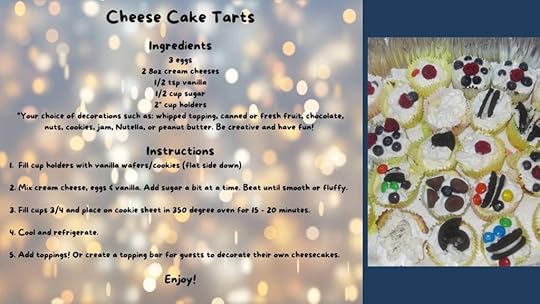 Paying it Forward
Paying it ForwardOne of my favorite things about Angela and Becca is how much they do to help others. They���ve always had a pay-it-forward mentality, which is why this site is loaded with free tools, downloads, and resources. But helping beyond the writing community is something they believe in as well. Each year they select a specific charity (or two) and donate a portion of their book revenue to it. Since there’s so much economic uncertainty right now, they’re donating $500 to their food banks.
Here���s the 2023 Recipients

This is only possible through your generosity, so know when you buy books, subscribe to One Stop for Writers, or attend a workshop, you are an important link in the chain. Thank you for helping to make the world a better place!
Happy holidays!The post Happy Holidays – Some Gifts for You appeared first on WRITERS HELPING WRITERS��.
December 21, 2023
Scene Mastery: Navigating Common Goal-Driven Scene Pitfalls

Goal-driven scenes are akin to the classic joke setup, ���A _____ and a _____ walk into a bar ������
A _____ and a _____ walk into a bar. The scene begins with the entrance of the protagonist and antagonist.
The first guy says ��� The first guy, our protagonist, lays out what���s on his mind���his immediate agenda, or the scene goal.
And so the other guys says ��� The antagonist throws a curveball, a turning point that disrupts the expected flow.
��� [punch line]! Surprise! Something new is revealed or happens that makes everything collide in an unexpected way.
In a joke, we laugh because the poor first guy has encountered something completely expected. In a scene, we turn the page to find out what the first guy does next. It���s cause and effect, action and reaction���the foundation of every novel.
 Here���s how goal-driven scenes work.
Here���s how goal-driven scenes work.Goal Establishing a clear scene goal draws readers into whatever the character will spend the scene attempting to accomplish, usually some incremental step toward the central story goal.
Turning point But something doesn���t go as anticipated, and the character is halted by a conflict, obstacle, reversal, or complication. This interruption, the scene���s turning point, throws a monkey wrench into what readers and the characters were hoping for or expecting.
Change Things are different now, because the turning point has changed the character���s original plan or course of action. How will this scene affect what���s next?
1: Establish the Scene GoalScene goals are incremental steps toward the ultimate story goal. They���re the viewpoint character���s immediate agenda. What���s on their mind? What did they get up today to accomplish? Unless you���re writing some variety of mystery or thriller, this agenda should be made clear to readers right away.
In a renowned memo to the writers of The Unit, playwright and filmmaker David Mamet underscored the necessity of clear scene goals.
Every scene must be dramatic. That means: The main character must have a simple, straightforward pressing need which impels him or her to show up in the scene. This need is why they came. It is what the scene is about. Their attempt to get this need met will lead, at the end of the scene, to failure���this is how the scene is over. It, this failure, will, then, of necessity, propel us into the next scene.

Issue: Failing to get the character emotionally engaged with the scene goal. Scene goals are serious business. If your character isn���t invested, readers won���t be either. The scene will flop, bereft of stakes and dramatic tension.
To clearly establish a scene goal, show readers what the character plans to do and why it matters to them. Properly done, this process hooks readers into the scene, rallying them to root for the character and keep reading to see whether they triumph or fall flat in their efforts.
Issue: Forcing a new scene goal with every scene, or keeping the same scene goal throughout the story. Because scene goals represent incremental steps, they���ll evolve as the story progresses. In fast-paced sections of the story, your viewpoint character���s immediate agenda may shift every scene. The bigger and more challenging a goal, the longer it will take to accomplish, and some goals will require multiple scenes to accomplish.
2: Interrupt With a Turning PointThe turning point is the peak of a scene. It���s the whole point of the scene, its raison d�����tre.

At a scene���s turning point, things stop unfolding the way the character had hoped or expected. They now face some new problem, conflict, or obstacle.
While this point in a scene is often described in terms of conflict, it���s often not about conflict at all. Although conflict is fundamental to every story, it���s not a necessity in every scene. Framing the peak of a scene as a turning point, rather than outright conflict, allows for more nuance.
A scene turning point can take the form of a complication, obstacle, or reversal. These terms are mostly self-explanatory, but let���s touch on what���s meant by a reversal. Renowned screenwriting and storytelling master Robert McKee identifies two types of scene reversals:
1. Reversal of power The relative power of the viewpoint character and another character in the scene swaps.
2. Reversal of expectation The viewpoint character enters the scene expecting one thing, only to encounter a different outcome.
Some of the most common scene writing problems are related to trouble in this turning point phase.
Issue: Failing to directly relate the scene turning point to the scene goal. For example, if Camille���s objective is to covertly retrieve a secret code from her coworker���s files, it wouldn���t make sense for the scene���s turning point to be returning home to find her apartment flooded due to a burst water heater in the unit above. This is definitely a nasty setback for Camille, but it doesn���t have any bearing on the pursuit of the secret code; that plot thread is left dangling.
Instead, imagine Camille poised to steal the secret code form her colleague���s office when the receptionist rushes down the hall with word of an emergency call from Camille���s landlord. This turning point directly affects the scene goal of obtaining the secret code. Just as Camille anticipates snatching the code, she���s yanked away.
Issue: Centering the scene turning point on an entirely internal dynamic. The scene turning point of a goal-driven scene demands the involvement of the viewpoint character with another person, thing, or event. Internal conflict alone isn���t enough to sustain a goal-driven scene, though it���s a powerful catalyst in reflection scenes (a topic for another day).
Issue: Mistaking the most exciting moment of the scene as the scene���s turning point. Think of the turning point as the peak of significance in the scene, not necessarily the most intense or dramatic moment. It���s the apex of tension in regards to the thing that matters most to the viewpoint character. It���s a crucial moment in the pursuit of the scene goal.
Issue: Rushing through the scene���s turning point. As the peak of a scene, the turning point is the juiciest part to readers. Give readers time to appreciate it. Sink into character interiority, allowing readers to savor their entanglement in the turning point. Unravel the character reactions one sticky finger at a time. While there may be times when you want to sweep into the next scene for shock value or chop things off to create a cliffhanger, in general, readers relish the opportunity to appreciate the character���s predicament. (Contrast the writing at this point in the scene with the first and last phases, which could require only a paragraph or pointed sentence to effectively convey.)
3: Demonstrate Change
The final phase of a goal-driven scene is the outcome, a moment marked by unexpected twists or the heralding of change. This phase of a scene is sometimes referred to as the scene ���disaster,��� but that needn���t imply an actual catastrophe. What���s important is the implication of impending change.
At this point in the scene, the viewpoint character either achieves the scene goal or encounters an unforeseen development. It���s now clear that whatever readers and the characters expected the beginning of the scene, something else has come along to add new developments.
Issue: The outcome or change phase at the end of a scene should rarely create a resolution. Resolution leads nowhere; with matters settled, the story momentum stops cold. Instead, pump forward momentum into the story. Because of this scene, what must the characters do next? This creates an emotional springboard toward the next scene.
The Action-Reaction DynamicTo sum it up, the structure of a goal-driven scene comes down to action and reaction. Goal-driven scenes are little vehicles for change, and protagonists are the drivers. They react, decide, choose, and act, concluding one cycle of options and turning down another avenue for pursuing the elusive story goal.
The post Scene Mastery: Navigating Common Goal-Driven Scene Pitfalls appeared first on WRITERS HELPING WRITERS��.
December 19, 2023
Five Top Tips To Smash Your Writing Goals in 2024

It’s hard to believe, but 2023 WHIZZED by. It’s been a tough one for many of us, with strikes, rising cost of living and a whole host of other things.
So to help writers get their writing done in 2024, here are five essential things writers should consider …
1) Establish a Writing RoutineIn 2024, it will be crucial for writers to establish a consistent writing routine that suits their lifestyle. Set aside dedicated time each day or week for writing and treat it as a priority. Whether it’s early mornings, late nights, or specific blocks of time during the day, having a routine will help maintain focus and make progress.
Note how I say you DON’T have to write every single day! I don’t — YES REALLY. Consistency is important, but that doesn’t have to mean writing every single day if that doesn’t work for you.
2) Set Clear Goals
Setting clear and achievable goals is a vital step towards completing writing projects in 2024. Break down larger goals into smaller, manageable tasks or milestones. This will allow writers to track progress, stay motivated, and celebrate successes along the way.
‘Bitesize chunks’ has always been my mantra … but just as importantly, we need to EVALUATE our progress and let go of goals or things that no longer serve us too!
3. Embrace Technology (or at least understand how it really works)In the constantly evolving world of technology, writers need to embrace tools and software that can streamline their work process. By leveraging the right technology, writers can save time and focus more on their writing.
From writing and editing software to online research tools and productivity apps, there are numerous resources available to enhance efficiency and creativity. B2W likes to use Grammarly, Coschedule and Hemingway.
The hot topic for 2023 was A.I, which is both a threat AND an opportunity for creatives. As we saw in the recent US Writers’ Strike, it’s a good idea to understand how AI works and what constitutes unethical use, because AI is not going anywhere. By understanding what AI is and isn’t, we can protect our interests.
4. Find a Supportive Writing Community
Joining a writing community, whether online or in-person, can be immensely helpful for writers in 2024. Connecting with fellow writers provides opportunities for feedback, collaboration, and support.
Online platforms, forums, workshops, and writing groups can offer valuable insights, motivation, and networking opportunities, helping writers stay inspired and committed.
5. Practice Self-CareTaking care of oneself is essential for writers to maintain both physical and mental well-being in 2024. Prioritise self-care activities like exercise, meditation, spending time with loved ones, pursuing hobbies, and getting ample rest.
Balancing work and personal life is crucial for avoiding burnout, staying motivated, and nurturing creativity. If your brain is fried, your ability to write WILL be affected … so do whatever it takes to make sure yours is rested wherever possible. Writing can wait, it’s not going anywhere!
Happy New Year!The post Five Top Tips To Smash Your Writing Goals in 2024 appeared first on WRITERS HELPING WRITERS��.
Writers Helping Writers
- Angela Ackerman's profile
- 1022 followers



